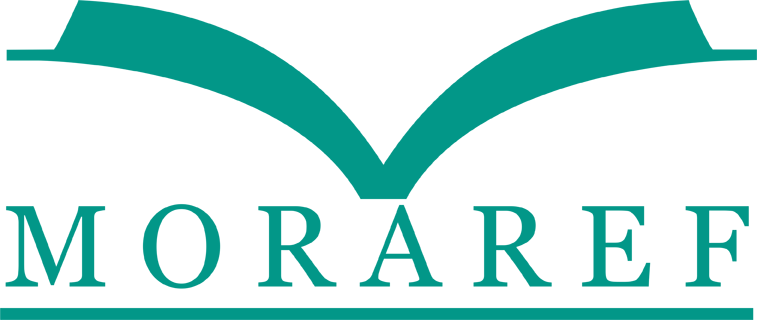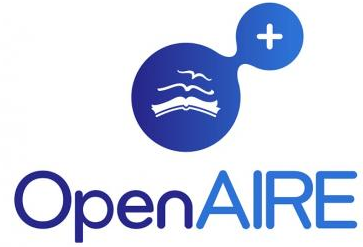PENGARUH DENTAL BRAILLE EDUCATION (DBE) TERHADAP ORAL HYGIENE PADA ANAK TUNANETRA
Abstract
TITLE
The influence of dental braille education (DBE) to oral hygiene of blind children
ABSTRACT
Blind children has poor oral hygiene. Such condition due to tooth brushing is not monitored, other factors such as brushing technique, motor skills and mentoring assistance are still negligible. Besides the lack of visualization to understand and master the techniques of oral hygiene practices. This study aimed to analyze the influence of Braille Dental Education (DBE) against Oral Hygiene in blind children.
Pre-experimental research design with the group pre-posttest design, further examination Plaque Index before the intervention. Intervention is given on a sample in the form of DBE and then evaluated at day 21. The outputs or outcomes in this study of assessment of the degree oral hygiene using the Plaque Index and DBE-shaped booklet. The research sample using purposive sampling method. Data analysis using descriptive statistics in the form of tables (boxplot or diagram), then the bivariate analysis using the non-parametric Wilcoxon to determine changes in oral hygiene on the results of the pretest to posttest results. Analysis of the data in this study using a computer program to test the hypothesis based on a significance level of <0.05 with 95% confidence level.
The results of the analysis of the difference in oral hygiene change from pretest to posttest showed no significant changes, indicated by Z = -3.126 and p = 0.002 (p> 0.005). It can be concluded that the hypothesis that there was an effect on oral hygiene DBE in blind children is acceptable because it is essentially a state intelligence of blind children is not different from normal children, and therefore requires an approach and good communication in handling it.
Key words : Dental Braille Education (DBE), Oral Hygiene, Children with Visual Impairment
Keywords
Full Text:
PDFReferences
Agnintia, D., Rachmawati, F., Arsita, R. dan Berti, P.L., 2013. Quality Self Care And Home Care. Solusi Kesehatan Gigi Dan Mulut Anak Tunanetra Di SDLB A-Y Kab Surakarta. e-Proceeding TIMNAS. Ditjen Dikti Kemdikbud RI.
Broadbent, Jonathan M, Thomson, W.M., Boyens, J.V. dan Poulton, R., 2011. Dental Plaque and Oral Health during the First 32 Years of Life. Journal of the American Dental Association (1939) 142(4): 415–26. http://dx.doi.org/10.14219/jada.archive.2011.0197.
Maher,C.A., Lewis, L.K, Ferrar, K., Marshall, S., De Bourdeaudhuij, I., dan Vandelanotte, C., 2014. Are Health Behavior Change Interventions That Use Online Social Networks Effective? A Systematic Review. J Med Internet Res. 2014 Feb 14;16(2).
Kadkhoda, Z, A Rezaei and Amiri. A, 2014. Efect of Visual Impairment Education on the Improvment of Oral Hygiene and Reduction of Periodontis Prevalence. International Journal of Medical Dentistry: 7–12.
Kementerian Kesehatan., 2010. Pedoman Pelayanan Kesehatan Anak di Sekolah Luar Biasa (SLB) Bagi Petugas Kesehatan. Direktorat Jenderal Bina Kesehatan Masyarakat, Jakarta.
Kementerian Pemberdayaan Perempuan dan Perlindungan Anak., 2013. Panduan Penanganan Anak Berkebutuhan Khusus Bagi Pendamping (Orang Tua, Keluarga dan Masyarakat). Deputi Bidang Perlindungan Anak Republik Indonesia, Jakarta.
Kumar, R V S Krishna, Nusrath Fareed and M Shanthi., 2013. The Effectiveness of Oral Health Education Program with and without Involving Self-Maintainable Oral Hygiene Skills among the Visually Impaired Children. International Journal of Scientific Study 01(03).
Neuman, W, Lawrence., 2006. Social Research Methods: Qualitative and Quantitative Approach. USA, University of Wisconsin, 227-234.
Notoatmodjo., 2012. Promosi Kesehatan dan Perilaku Kesehatan. Rineka Cipta, Jakarta.
Putri, M. H. dan Sirait, T., 2014. Pengaruh Pendidikan Penyikatan Gigi Dengan Menggunakan Model Rahang Dibandingkan Dengan Metode Pendampingan Terhadap Tingkat Comparison of Toothbrushing Education Effect to Dental and Oral Hygiene Levels between Jaw Model Method and Mentoring Method on in. MKB Vol 46(40): 134–42.
Raiyani, C. M., R. Arora, Deepak P. Bhayya dan S. Dogra., 2014. Evaluation of Efficacy of Various Types of Toothbrush Grips Used to Remove Dental Plaque by Visually Impaired Children. Scholars Academic Journal of Biosciences 2(11): 742–45.
Ravishankar, P. L., 2013. Prevalence of Dental Caries and Oral Hygiene Status among School Going Children: An Epidemiological Study. Journal of Contemporary Dental Practice 14(4): 743–46.
Reddy, Venugopal K., 2014. A Comparison of Oral Hygiene Status and Dental Caries Experience among Institutionalized Visually Impaired and Hearing Impaired Children of Age between 7 and 17 Years in Central India. Journal of Indian Society of Pedodontics and Preventive Dentistry 31(3): 141–45.
Sheehy, N., 2004. Volume 59 Number 5 May 2004. American Foundation for the Blind. All rights reserved 59(5): 1–27.
Singh, Abhayjeet, Ashish Kumar, Vikas Berwal and Manjit Kaur., 2014. Original Article Comparative Study of Oral Hygiene Status in Blind and Deaf Children of Rajasthan. Depeartement of Oral Medicine and Radiology: 26–31.
Zeng, Xian-Tao, 2015. Meta-Analysis on the Association between Toothbrushing and Head and Neck Cancer. Oral Oncology 51(5): 446–51. http://linkinghub.elsevier.com/retrieve/pii/S1368837515001268.
DOI: https://doi.org/10.31983/jkg.v3i2.1778
Article Metrics
Refbacks
- There are currently no refbacks.
| View My Stats |










.png)


.png)
.png)









